terça-feira, 31 de agosto de 2021
A study on emergency power generation system at waterworks by cooperation of ESS and emergency generator-Lee Hyoung Mook- Department of Electrical Engineering Graduate School, Chonnam National University -2021
Department of Electrical Engineering
Graduate School, Chonnam National University
(Supervised by Professor Sung-Jun Park)
(Abstract)
Recently, as awareness of the finiteness of fossil energy, environmental
pollution, and the dangers of nuclear power generation has grown, the
direction of energy policy in domestic is changing to improve economic
efficiency including denuclearization and a stable supply. In accordance
with this policy direction, the operation of aging nuclear power plants is
suspended and the construction of new nuclear power plants is being
canceled. However, the power supply and demand problem due to the decrease
in nuclear power generation sources can be overcome with distributed power
using renewable energy and active idle resources. In the smart grid using
distributed power, demand management, power quality, and power reliability
improvement are important factors, and related research is ongoing. In
this paper, we proposed an uninterruptible system consisting of an
emergency generator and a short-cycle ESS, and proposed an integrated
operation algorithm that can provide stable power to the consumer and
improve power reliability
Research on uninterruptible systems using ESS has been conducted
before. However, in order to secure a long back-up time, a
large-capacity battery system is required. This greatly increases the
overall system cost, so there is no problem in the functional part, but in
the field of construction cost, the economical efficiency of the unit price
was not suitable, so the commercialization stage was not progressed.
Recently, various studies using emergency generators, which were
temporarily used for emergency power supply in case of power failure,
have been conducted. Public institutions and for-profit institutions are
also increasingly participating in DR projects for demand resources using
emergency generators. In order to use the emergency generator as a
demand resource, a power changeover switch is required, but in the
beginning, ATS (Automatic Transfer Switch) was widely used. ATS has a
disadvantage that power failure occurs within about 100[ms] when
switching over. It is participating in the DR project by replacing it with a
CTTS (Closed Transition Transfer Switch), which is a complementary
uninterruptible power changeover switch. In the case of CTTS, there is a
grid tied CTTS (G-CTTS) that directly controls the AVR and governor of
an emergency generator to operate in a grid-tied type, and by using this,
parallel operation with a power converter is possible.
The system proposed in this paper is composed of G-CTTS,
emergency generator and short-cycle ESS. The rated power capacity of
the proposed uninterruptible system is 360kW, and for each component,
the inverter is 500kW, the G-CTTS and the emergency generator are
360kW. For short-cycle ESS batteries, 500kWh of carbon batteries were
used, and a PC-based PMS operation program was used for power
management of the entire system.
This paper proposes the operation and element technology for the
uninterruptible system consisting of an emergency generator and
short-cycle ESS. The factors proposed in this paper are largely
summarized into five categories.
First, a large-capacity uninterruptible system configuration consisting
of an emergency generator and a UPS was proposed. In a system
composed of two voltage sources, power control is mainly handled by the
inverter, but in this system, power control is performed by the
emergency generator using G-CTTS. When G-CTTS performs power
control during two types of parallel operation, the required function of
the inverter is lowered, and a large-capacity uninterruptible system can
be implemented only by applying a commercial UPS.
Second, in order to improve the reliability and quick response of the
emergency generator in parallel operation, it is necessary to precisely
detect the phases of different voltage sources and control the frequency.
To this end, we propose a high-precision PLL method that synchronizes
the phase of the voltage source to be synchronized at high speed using a
virtual d-q coordinate method.
Third, high-speed response and output of the inverter are important
for non-power failure operation. In the case of the output quick response
of the inverter, the time required to the rated output increases depending
on the capacity. Therefore, it is possible to operate stably only when the
time for detecting a power failure is reduced as much as possible. In the
case of a site with a large system impedance, the voltage THD increases
when the load contains many harmonics. If the voltage condition for
power failure detection is sensitively applied, it can be recognized as a
power failure even if it is not a power failure. Therefore, we propose a
high-speed blackout detection algorithm using Perid Time Shit that can
accurately detect blackout at high speed.
DOWNLOAD THESIS LINK:
quarta-feira, 25 de agosto de 2021
Gallium Nitride Efficacy for High Reliability Forward Converters in Spacecraft Aidan Mac Phillips, THESIS M.S. Master of Science in Electrical and Computer Engineering University of Pittsburgh-2020
Gallium Nitride Efficacy for High Reliability Forward Converters in Spacecraft
Aidan Mac Phillips, M.S.
University of Pittsburgh, 2020
This thesis was presented
by
Aidan Mac Phillips
It was defended on
July 13, 2020
and approved by
Dr. Brandon Grainger, PhD., Assistant Professor, Department of Electrical and Computer Engineering
Dr. Alan George, PhD., Professor, Department of Electrical and Computer Engineering
Dr. William Stanchina, PhD., Professor Emeritus, Department of Electrical and Computer Engineering
Thesis Advisor: Dr. Brandon Grainger, PhD., Assistant Professor, Department of Electrical and Computer Engineering
ABSTRACT
Gallium Nitride (GaN) devices show particular promise for space-rated power conversion applications that rely on MOSFET technology whose performance is severely limited by the radiation hardening processes. Though GaN failure mode classification and radiation hardened device variety is limited, the current space-rated selection pool can still yield significant efficiency and power density improvements. However, the context of GaN research is often future oriented such that the application of GaN to common, proven, space-rated converter designs are rare.
The presented work quantifies the performance benefits of market available, space-rated GaN HEMTs over radiation hardened MOSFETs for a synchronous forward converter, which remains an extremely popular topology for isolated, medium power, DC-DC conversion on NASA satellite systems. Two 75-Watt, space-rated forward converters were designed, implemented, and benchmarked, with the power switch technology being the single variable of change. By forming pareto-optimal fronts of the key device metrics, optimal Rad-hard MOSFETs were chosen so that the baseline converter performance was considered best-case.
The frequency limitations of common, available, Rad-hard PWM controllers limited power density in the GaN and Si converters alike, however, efficiency gains proved sizeable. The GaN based converter saw a peak efficiency of 86%, which was a 4.54% improvement over the Si baseline. Detailed efficiency and loss differential plots are presented which show the GaN converter’s reduced sensitivity to input voltage. Extreme similarity between the waveforms and functional characteristics of the two converters verified the design of the experiment. Furthermore,the performance of the baseline Si converter proved very similar to that of a large sampling of space-rated forward converters, making the experimental results have a high degree of utility for manufacturers.
Practical Battery Discharge Regulator with Weinberg Topology By Anand E P, Priya G Das Anand E P *, EE Dept., NSS College of engineering, Palakkad, India-International Journal of Recent Technology and Engineering (IJRTE) ISSN: 2277-3878, Volume-9 Issue-1, May 2020
Practical Battery Discharge Regulator with Weinberg Topology by Anand E P, Priya G Das Anand E P *, EE Dept., NSS College of engineering, Palakkad, India. Email: anandep666@gmail.com Priya G Das, EE Dept., NSS College of engineering, Palakkad, India.. Email: priyadas27@gmail. International Journal of Recent Technology and Engineering (IJRTE) ISSN: 2277-3878, Volume-9 Issue-1, May 2020.
Abstract:
A BDR (battery discharge regulator) required to keep battery voltage within acceptable limits and improve life of the battery. A converters with greater reliability, high power density, tolerance to any fault, are needed for BDR in space craft power supply. Weinberg converter topology is suitable meet this specification. This topology can be treated as a modified push-pull converter topology with coupled inductor. Use of coupled inductor makes output current of converter is continuous, which reduces the output filter capacitors requirement. In this, working of converter and its main features are explained and also practically implemented the converter and its results are analyzed.
Keywords: Weinberg converter, fault tolerance, battery discharge regulator, coupled inductor
segunda-feira, 23 de agosto de 2021
Advanced Control Design for Grid-Connected Photovoltaic System and Electric Drives by Kamran Zeb-Department of Electrical and Computer Engineering The Graduate School Pusan National University
Advanced Control Design for Grid-Connected Photovoltaic System and Electric Drives
By
Kamran Zeb
August 2020
Department of Electrical and Computer Engineering
The Graduate School Pusan National University
Abstract
The application of Photovoltaic (PV) in the distributed generation system is acquiring more
consideration with the developments in power electronics technology and global environmental
concerns. Solar PV is playing a key role in consuming the solar energy for the generation of
electric power. The use of solar PV is growing exponentially due to its clean, pollution-free,
abundant, and inexhaustible nature. In grid-connected PV systems, significant attention is
required in the design and operation of the inverter to achieve high efficiency for diverse power
structures. The requirements for the grid-connected inverter include; low total harmonic
distortion of the currents injected into the grid, maximum power point tracking, high efficiency,
and controlled power injected into the grid. The performance of the inverters connected to the
grid depends mainly on the control scheme applied. In this thesis, the global status of the PV
market, classification of the PV system, configurations of the grid-connected PV inverter,
classification of various inverter types, and topologies are discussed, described and presented
in a schematic manner. A concise summary of the control methods for single- and three-phase
inverters has also been presented. Finally, the criteria for the selection of inverters and the future
trends are comprehensively presented.
In addition, Grid-Connected PVS required advance DC-link controllers to overcome
second harmonic ripple and current controllers to feed-in high-quality current to the grid. This
thesis successfully presents the design of a Fuzzy-Logic Based PI (F-PI) and Fuzzy-Logic based
Sliding Mode Controller (F-SMC) for the DC-link voltage controller and Proportional Resonant
(PR) with Resonant Harmonic Compensator (RHC) as a current controller for a Single-Phase
Two-Stages Grid-connected Transformerless (STGT) PV Inverter. The current controller is
designed with and without a feedforward PV power loop to improve dynamics and control. A
Second Order General Integral (SOGI)-based Phase Lock Loop (PLL) is also designed that has
a fast-dynamic response, fast-tracking accuracy, and harmonic immunity. A 3 kW STGT-PV
system is used for simulation in Matlab/Simulink. A comparative assessment of designed
controllers is carried out with a conventionally well-tuned PI controller. The designed
controllers improve the steady-state and dynamic performance of the grid-connected PV
system. In addition, the results, performance measure analysis, and harmonics contents
authenticate the robustness, fastness, and effectiveness of the designed controllers, related to
former works.
In this thesis, Smart Grid Initiative of the U.S department of energy based Single Phase
Voltage-Source Smart Inverter (SPV-SSI) 5 kVA is designed and analyzed in detail that has the
combined capability of supplying power to local load, injecting power into grid, supplying
power to the utility load up to rated capacity of the inverter, store energy in lead acid battery
bank, the ability to control voltage at the Point of Common Coupling (PCC) during voltage
sags/faults, and decision making capability on real time pricing information obtained from the
utility grid through advance metering. This thesis also includes complete design of Smart
Inverter in dq synchronous reference frame, bidirectional DC-DC Buck-Boost converter, IEEE
standard 1547 based islanding and recloser, and STATCOM functionalities. Moreover, optimal
and advance controllers i.e. F-PI and F-SMC are designed. The performance of F-PI and Fxvi
SMC is superior, stable, and robust in comparison to that of conventionally tuned PI controllers
both for voltage control loop (islanded mode) and current control loop (grid connected mode).
The simulation results effectively validate the efficacy of the proposed controllers.
This thesis also presents modeling and design of a digital PR with RHC to feed-in high
quality current. The novelty is on designing the control in a different approach than the
conventional methods. As a result, practical engineers find an easy, fast and accurate way to
design the control strategy. The proposed system has the capability to inject both active and
reactive power in an effective manner. Synchronous reference frame-based phase lock loop that
works well under nonideal and distorted grids, is used for synchronization. The platform used
for simulation and auto code generation is PSIM 9.1 while code composer studio 6.2.0 is used
for debugging. The feasibility and effectiveness of the design controller is also validated using
Typhoon (Hardware in Loop) HIL 402 device for real time testing on the DSP board
TMS32F28335 from Texas Instruments. The designed controller is tested under various
distortion, disturbance, and non-ideal condition. The simulation and HIL results authenticate
the robustness, fastness, and efficacy of the designed controller.
Recently, the Indirect Field Oriented Control (IFOC) scheme for Induction Motors
(IM) has gained wide acceptance in high performance applications. The IFOC has remarkable
characteristics of decoupling torque and flux along with an easy hardware implementation.
However, the detuning limits the performance of drives due to uncertainties of parameters.
Conventionally, the use of a PID controller has been very frequent in variable speed drive
applications. However, it does not allow for the operation of an IM in a wide range of speeds.
In order to tackle these problems, optimal, robust, and adaptive control algorithms are mostly
in use. The work presented in this thesis is based on new optimal, robust, and adaptive control
strategies, including an Adaptive PI controller, sliding mode control, Fuzzy Logic (FL) control
based on Steepest Descent (SD), Levenberg-Marquardt (LM) algorithms, FL based on Newton
Algorithm (NA), FL based on Gauss Newton Algorithm (GNA) and Hybrid Control (HC) or
adaptive sliding mode controller to overcome the deficiency of conventional control strategies.
In addition, The main theme is to design a robust control scheme having faster dynamic
response, reliable operation for parameter uncertainties and speed variation, and maximized
torque and efficiency of the IM. The test bench of the IM control has three main parts: IM
model, Inverter Model, and control structure. The IM is modelled in synchronous frame using
𝑑𝑞 modelling while the Space Vector Pulse Width Modulation (SVPWM) technique is used for
modulation of the inverter. Our proposed controllers are critically analyzed and compared with
the PI controller considering different conditions: parameter uncertainties, speed variation, load
disturbances, and under electrical faults. In addition, the results validate the effectiveness of the
designed controllers and are then related to former works.
LINK:
sábado, 21 de agosto de 2021
Control Design of a Single-Phase DC/AC Inverter for PV Applications--By Haoyan Liu University of Arkansas, Fayetteville
Control Design of a Single-Phase DC/AC Inverter for PV Applications
A thesis submitted in partial fulfillment
of the requirements for the degree of
Master of Science in Electrical Engineering
by
Haoyan Liu
Harbin University of Science and Technology
Bachelor of Engineering in Automation, 2012
University of Arkansas, Fayetteville
Abstract
This thesis presents controller designs of a 2 kVA single-phase inverter for photovoltaic
(PV) applications. The demand for better controller designs is constantly rising as the renewable
energy market continues to rapidly grow. Some background research has been done on solar
energy, PV inverter configurations, inverter control design, and hardware component selection.
Controllers are designed both for stand-alone and grid-connected modes of operation. For standalone
inverter control, the outer control loop regulates the filter capacitor voltage. Combining the
synchronous frame outer control loop with the capacitor current feedback inner control loop, the
system can achieve both zero steady-state error and better step load performance. For grid-tied
inverter control, proportional capacitor current feedback is used. This achieves the active
damping needed to suppress the LCL filter resonance problem. The outer loop regulates the
inverter output current flowing into the grid with a proportional resonant controller and harmonic
compensators. With a revised grid synchronization unit, the active power and reactive power can
be decoupled and controlled separately through a serial communication based user interface. To
validate the designed controllers, a scaled down prototype is constructed and tested with a digital
signal processor (DSP) TMS320F28335.
LINK DOWNLOAD:
Assinar:
Postagens (Atom)










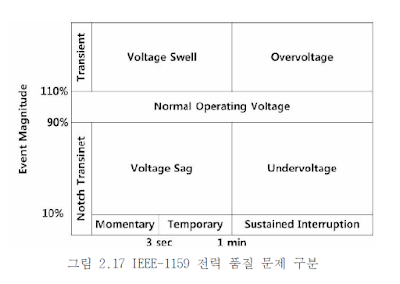
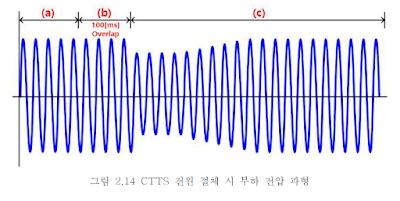
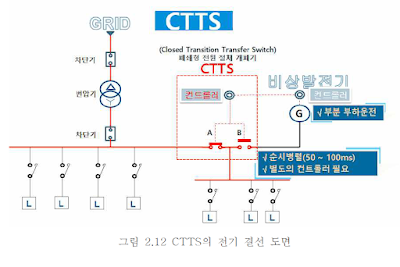
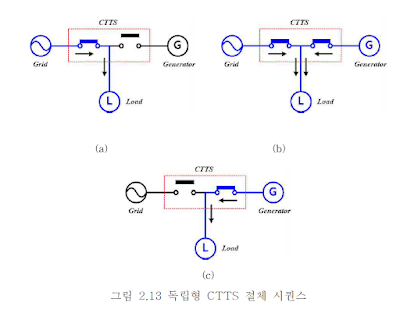
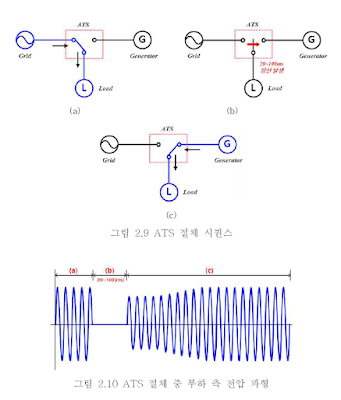
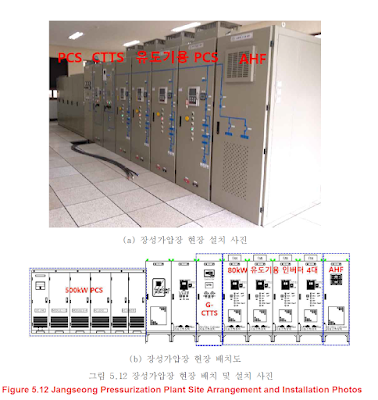
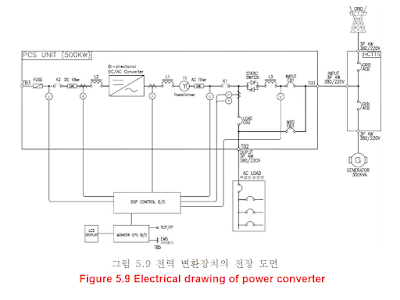

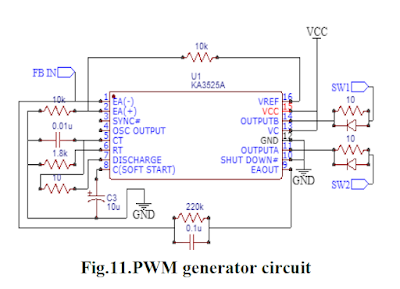

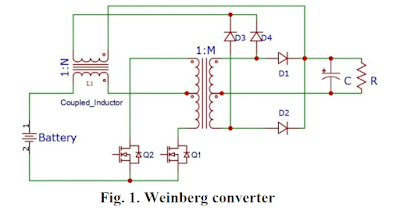
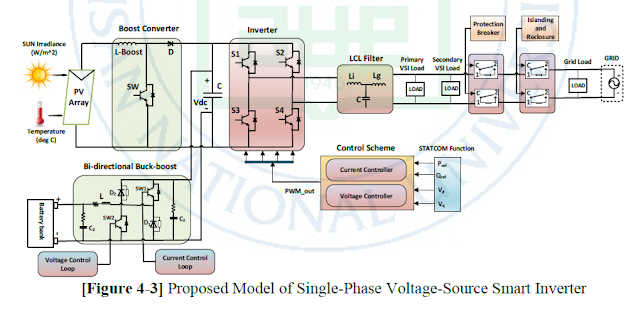

























 JOSIL ARTISTA PLASTICO FORTALEZA CEARA BRASIL AV.HERACLITO GRAÇA 41 TEL(85)32542378
JOSIL ARTISTA PLASTICO FORTALEZA CEARA BRASIL AV.HERACLITO GRAÇA 41 TEL(85)32542378















